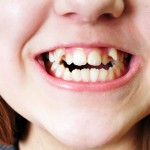
The effect of malocclusion on oral health, caries, periodontal disease, and oral health reported quality of life has been considered in many studies although findings are inconsistent.
The aim of this review was to determine the association between malocclusion and the severity of dental caries among children and adolescents in the permanent dentition.
Methods
Searches were conducted in the Cochrane Library, Medline, Scopus, Web of Science and Google Scholar databases. Observational studies assessing the association between malocclusion assessed using the Dental Aesthetic Index (DAI) and decayed missing and filled teeth (DMFT) were considered. Two reviewers independently selected studies and extracted data. The Newcastle-Ottawa tool adapted for cross-sectional studies was used to assess study quality and the GRADE approach to assess the certainty of the evidence. Meta-analysis was used to assess the association among different categories of malocclusion with dental caries.
Results
- 5 cross-sectional studies involving a total 4,844 patients of were included.
- 3 studies were conducted in India, one in Iran and one in Brail.
- All the studies were assessed as being of moderate to high quality.
- Malocclusion was associated with higher mean DMFT (see table).
| DAI Score | Mean Difference (95%CI) | |
| Handicapping malocclusion | ≥ 36 | 1.03 (0.61 to 1.44) |
| Severe malocclusion | 31 – 35 | 0.32 (0.13 to 0.51) |
| Definite malocclusion | 26 – 30 | 0.19 (0.03 to 0.35) |
Conclusions
The authors concluded: –
Malocclusion is associated with dental caries in the permanent dentition. DMFT scores and the strength of the association increased with severity of malocclusion. Low to moderate certainty of evidence was observed for association between handicapping, severe, and definite malocclusion with dental caries.
Comments
The authors have searched a good range of databases to identify paper. Inclusions have been restricted to only those studies using the Dental Aesthetic Index (DAI) to classify malocclusion and while the DAI index is a endorsed by the WHO as a tool for screening and epidemiology its use is not extensive as indicated by the small number of studies initially screened as eligible. All of the included studies are cross-sectional with all 5 accounting for age but only two accounting for socio-economic status. A majority of the studies were conducted in India with no studies being included from high- income countries so the findings may be more applicable to developing countries. While the findings suggest an association between malocclusion and caries that demonstrates a dose-response relationship the cross-sectional nature of the included studies, limited number of confounders assessed and potentially restrictive nature of the inclusion criteria means that the findings should be viewed very cautiously.
Links
Primary Paper
Singh A, Purohit B. Is Malocclusion Associated with Dental Caries among Children and Adolescents in the Permanent dentition? A Systematic Review. Community Dent Health. 2021 Aug 31;38(3):172-177. doi: 10.1922/CDH_00340Singh06. PMID: 33780175.
Other references
Dental Elf – 11th Dec 2020
Dental Elf – 13th Jan 2016
Impact of malocclusion on oral health related quality of life is small

THANKS